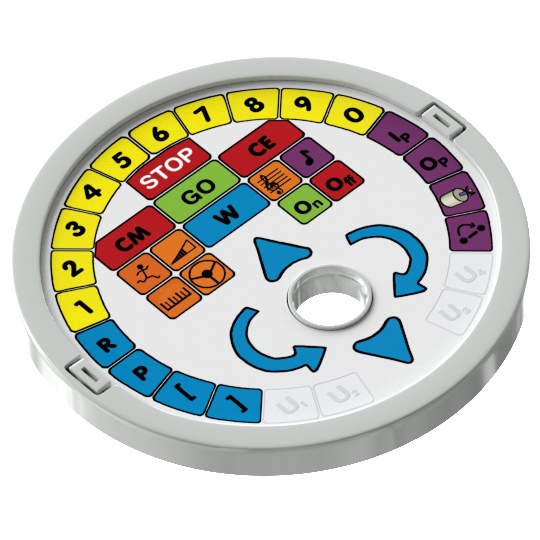Standard Roamers
Standard Roamers gradually introduce programming ideas and features. This starts with a simple robot and steadily builds student's expertise and confidence, enabling them to tackle more complex problems until they reach the next level of programming. This is an upgrade of the Classic Roamer.
Age Groups
- Ages 3 to 5 - Early Years Roamer
- Ages 5 to 7 - Infant Roamer
- Ages 7 to 9 - Primary Roamer
- Ages 9 to 14 - Junior Roamer
Talking Help
If you make a mistake programming Roamer, it tells you how to correct it. This feature makes the process of learning to program more exploratory.
Keypads Change Roamer
Standard Roamers come with appropriate keypads. You transform your Roamer by putting one of the other Keypad Modules on the same Roamer Base Platform.
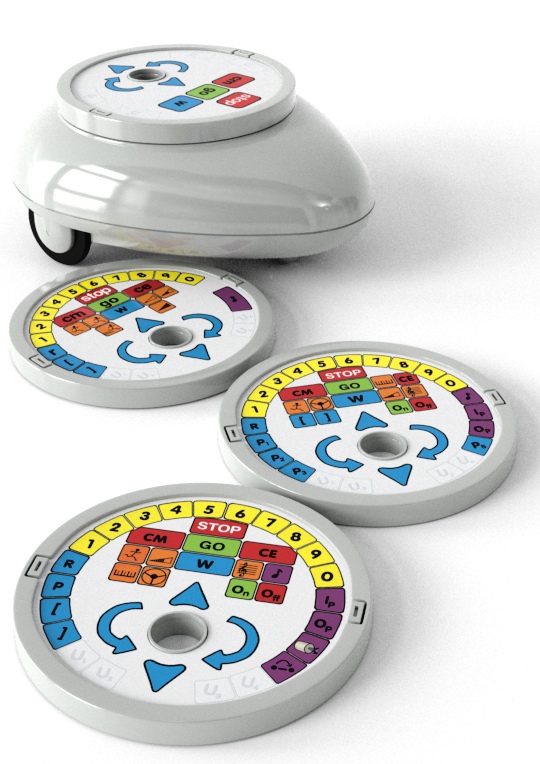
One Keypad
You do not need to buy a different Keypad Module for each Standard Roamer. You can download, into a Keypad Module, any of the behaviours from the Standard Behaviour CD. The Keypad Module is like a Concept Keypad - change the behaviour and the Graphic and you have a different robot.
In principle each Keypad is kept as simple as possible by containing only the keys needed for the Standard operation. However, you may want to add to the features to suit a project (see Roamer Characters). To do this you modify the Behaviour using the tools in RoamerWorld by defining the User Keys. The CD includes a number of popular modified Standard Behaviours - for example a Primary Roamer with keys to operate pen up and pen down commands.
Early Years Roamer
This is the simplest of the Standard Roamers. You program Roamer using counting paradigms: to make it go forward 2 you press the forward button twice. Similarly to make the Roamer stay still and quiet for 2 seconds or turn right through 2 quarter turns.
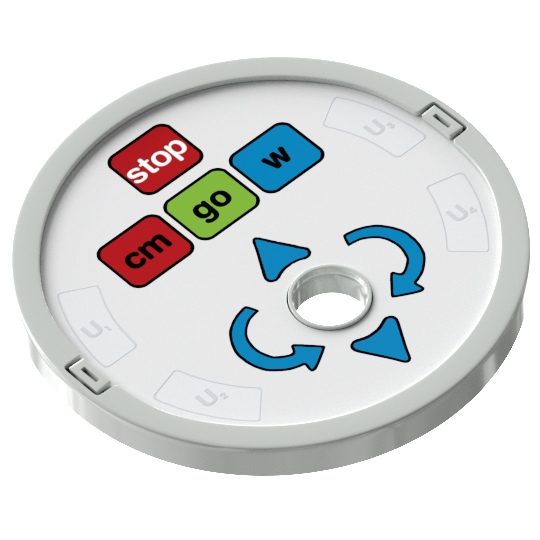
Infant Roamer
The Infant Roamer introduces the more conventional syntax of pressing a key for direction and a number to tell the robot how far to move. It also introduces the powerful LOGO idea of repeat. Mathematics is sometimes defined as the science of patterns. Using the repeat function helps students develop their pattern recognition skills. With all the new features these patterns are not restricted to the geometric movements of Turtle Graphics. It also applies to sound levels, music, speed and power drive features introduced in this behaviour.
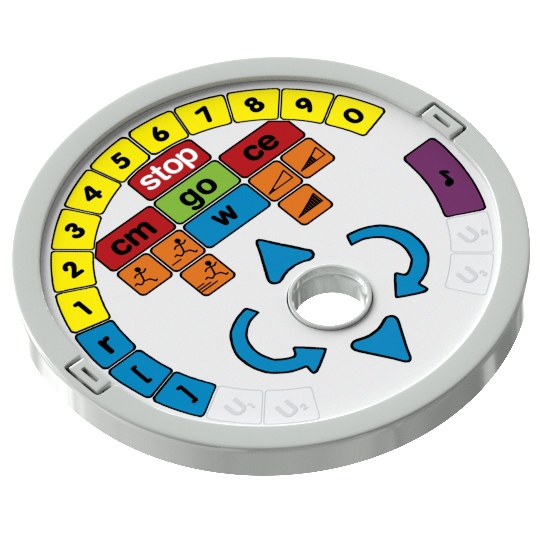
Primary Roamer
The Primary Roamer makes the commands for features like music and speed more general. One of the big things introduced here is the idea of the procedure. Again this is essentially about more complex forms of pattern recognition. This is one of the most powerful and underused features of LOGO and the Classic Roamer. Procedures are fundamental to the notion of problem solving. The process of breaking problems down into sub problems, solving these individually and then combining these "mini" solutions to gain an overall resolution is a key skill procedures will help develop.
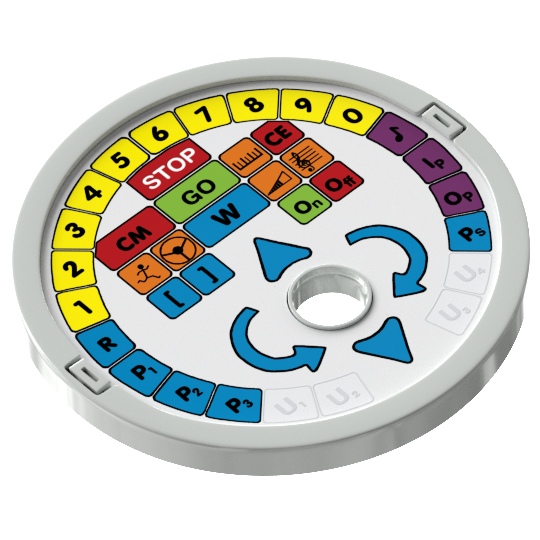
The other big feature of Primary Roamer is its gentle introduction to control. If you have used the Pen Up and Pen Down modification to Infant or Early Years Roamer you will have already done some of this work. Now there is a generalised key to operate inputs and outputs in a very simplified manner, which lays a foundation for work with Junior Roamer.
Junior Roamer
This contains the full Procedure, the generalised programming of features like speed, and the full Control Features. The robot comes with a single Control Pod, which in addition to the Input and Output on the Roamer Base Platform provides a further three inputs and three outputs. The behaviour also supports the programming of servo motors either directly or through relays.
